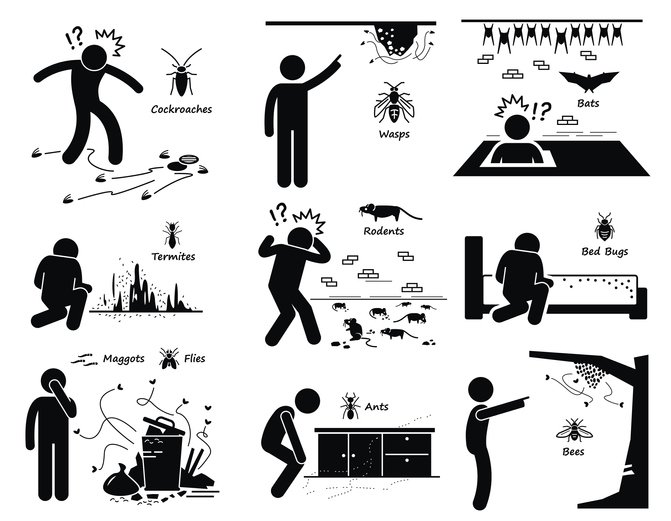WHOSE PROBLEM ARE THOSE PESKY PESTS?
THE PROBLEM: An owner has rodents in his/her unit and refuses to pay to exterminate them. How should the board handle this?
MEEB’S SOLUTION: Generally, in condominium communities the managing board controls the common areas but their authority ends at the threshold of owners’ units. There are exceptions, however, and pest control is one of them. Nobody likes uninvited guests especially the ones that refuse to leave. Boards have the authority – and the obligation – to protect the health and safety of residents and to prevent property damage in the community. Because pests can migrate to other units and common areas, they pose a threat to both residents and property. So, the board can and should work with owners to deal with the problem. Sometimes that can be at the owner’s expense but with assistance from management. Other times it makes more sense to treat the issue as a common expense assuming the owner in question did not cause the infestation and has not acted negligently. Requiring owners to exterminate their own unit is often the answer. But if the board wants owners to report the problem early – and not fear incurring a large expense – it may make good policy to treat the issue as a common expense.
If the pests have spread to other units, the board should certainly hire an exterminator to treat all the units. If a non-cooperative owner is responsible for the problem, the board can bill this owner for the extermination costs. However, if there are breaches in the foundation or the siding through which the pests can enter — making the issue a common one, rather than an owner issue — then the association arguably should pay the extermination costs for the entire community.
Not every situation is the same and that certainly is true with bed bug infestations, for several reasons:
Bed bugs aren’t necessarily caused by poor housekeeping; they can unknowingly arrive in suitcases and on the clothes of people who sleep in infested hotels.
Bed bugs can spread easily throughout the community. An infestation in one unit can quickly become a community-wide problem so waiting for an owner to remediate the issue is not the best option.
Eliminating bed bugs requires specialized (expensive) procedures and may require multiple treatments. If a single unit is not treated effectively, the bed bugs will continue to multiply and the infestation will become a chronic problem for the community.
Early reporting of bed bugs is crucial – so again – the Board may want to encourage reporting and only hold owners responsible for the cost when they have been negligent and/or neglectful.
Theoretically, an owner who discovers bed bugs in his/her unit should be responsible for dealing with them. But because the owner often didn’t “cause the problem”— and therefore cannot be seen as negligent — and because it is so unlikely that bed bugs originating in one unit will be confined there − in most cases, the board should coordinate the treatment process to ensure that all units are treated effectively, and the association should pay the extermination costs.
Because treating pests often requires the cooperation of multiple residents, we advise boards to adopt a pest resolution, similar to a mold/maintenance resolution, specifying that owners have an obligation to report infestations, to treat (or cooperate with association efforts to treat), their units, and to cooperate fully with community-wide extermination procedures. If an owner does not comply with the minimum standards set in the resolution there is a better chance of establishing that they have acted negligently.
For more information on how to handle pests please contact Dean Lennon.




